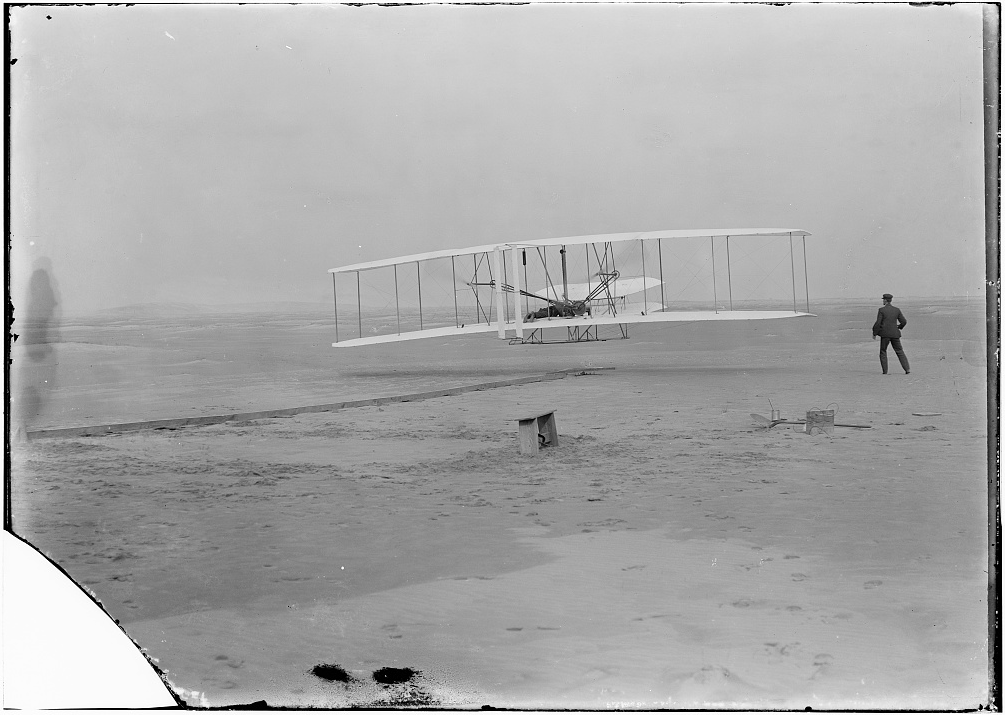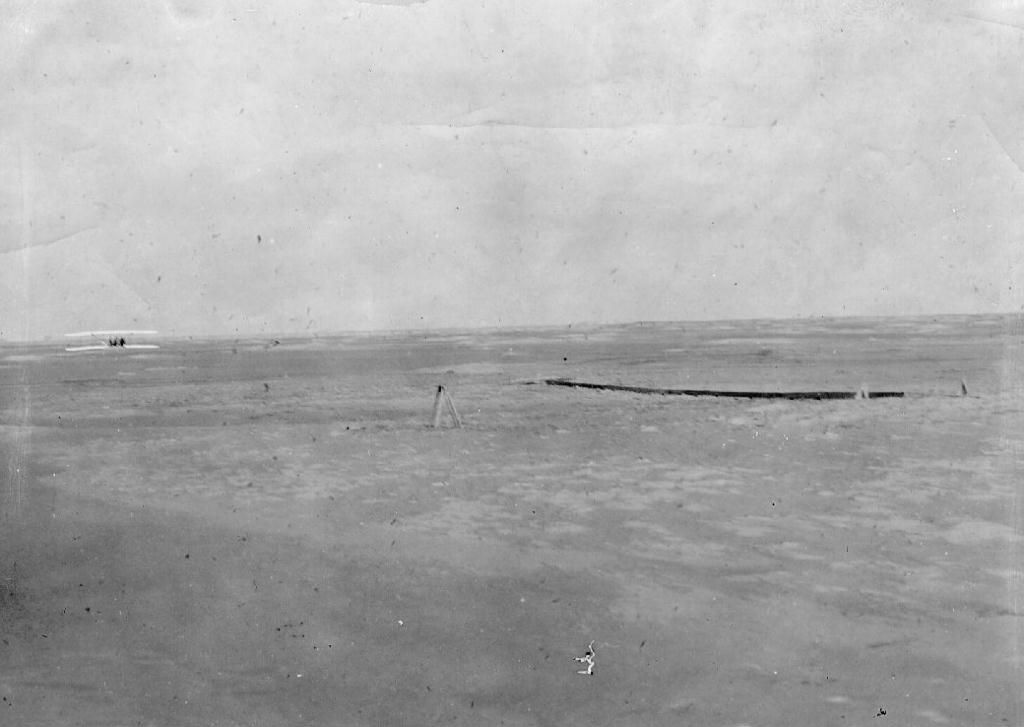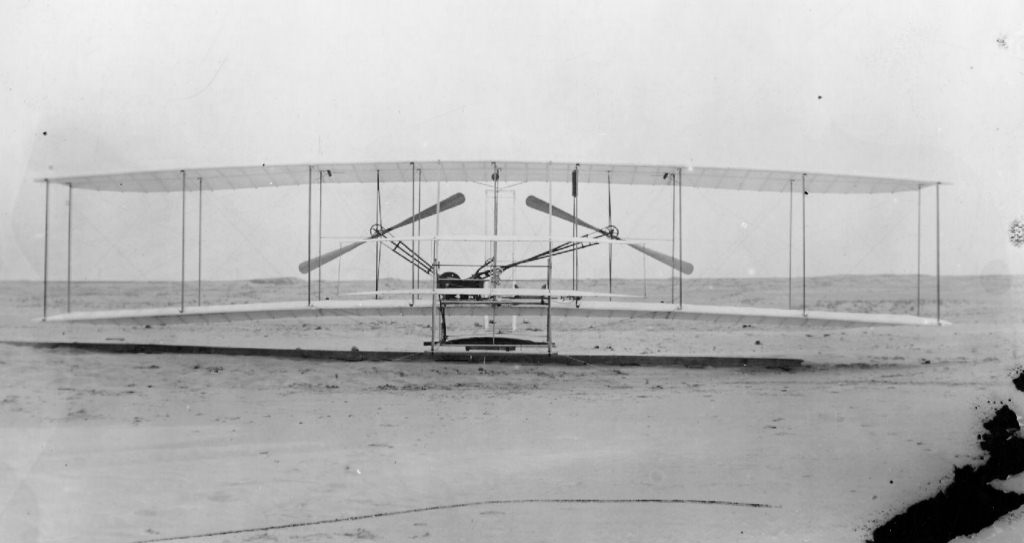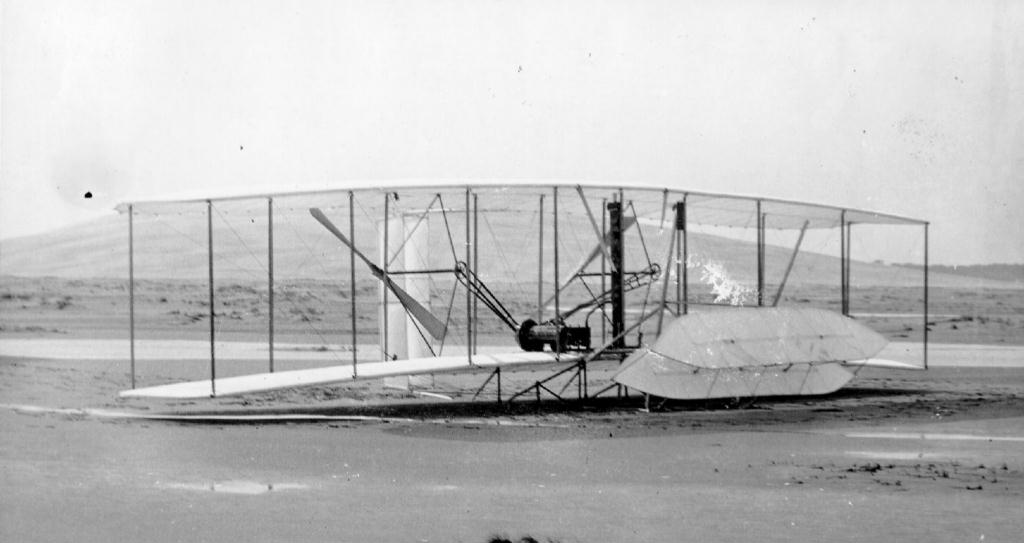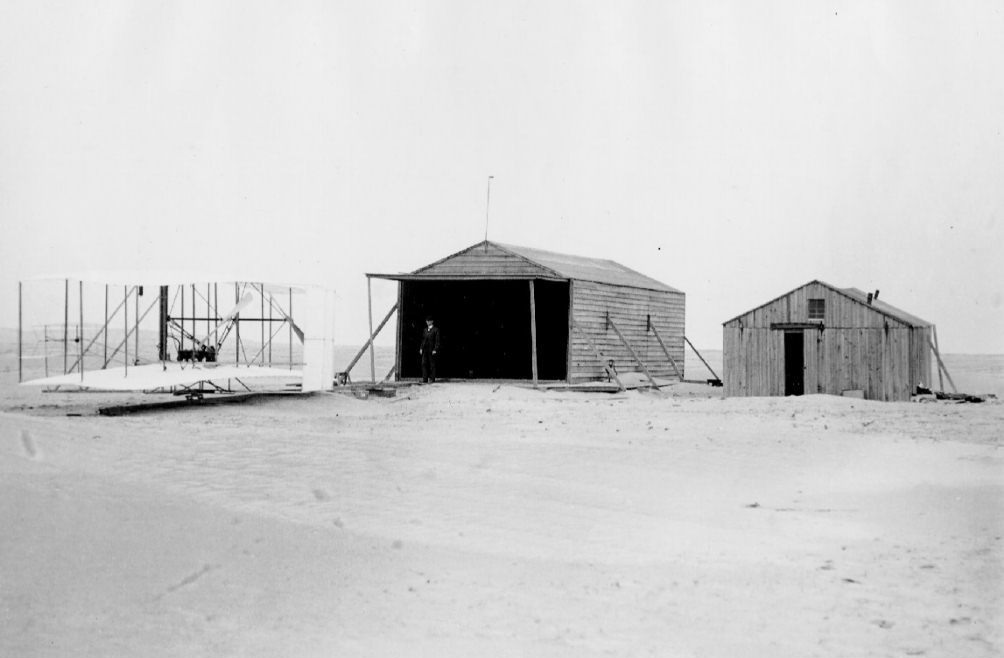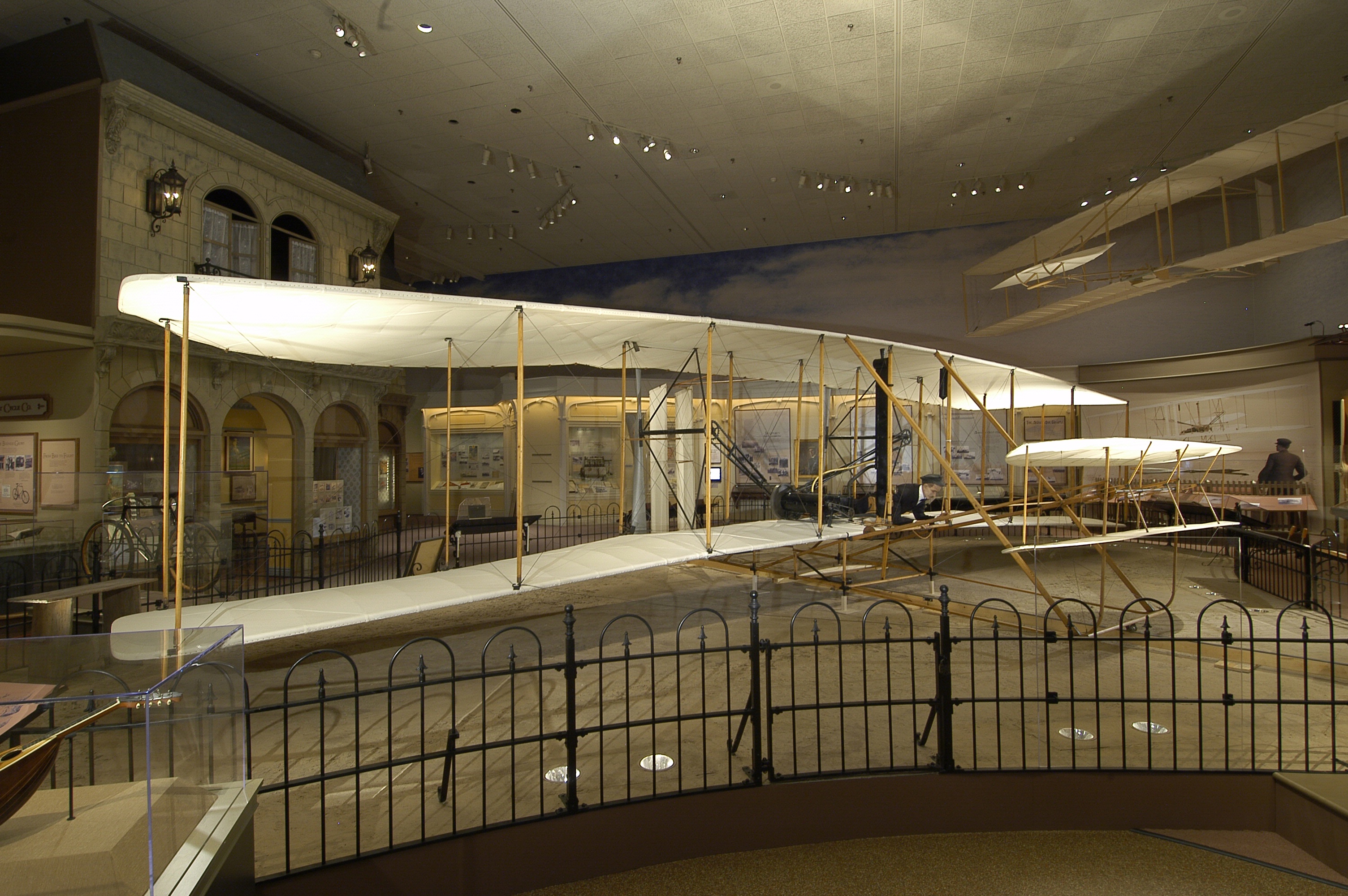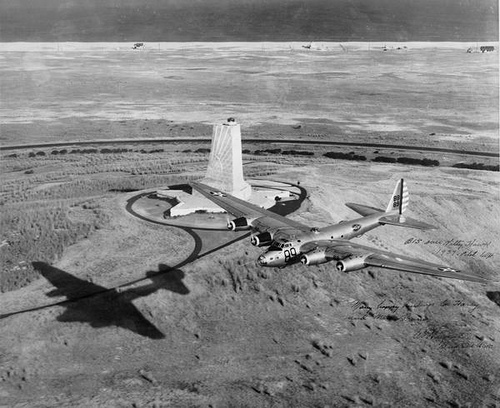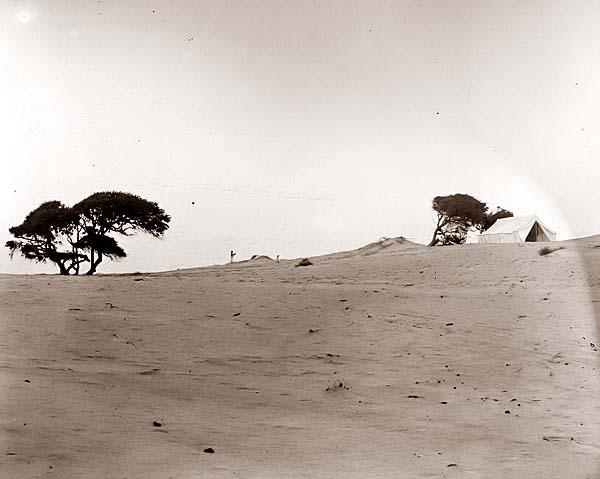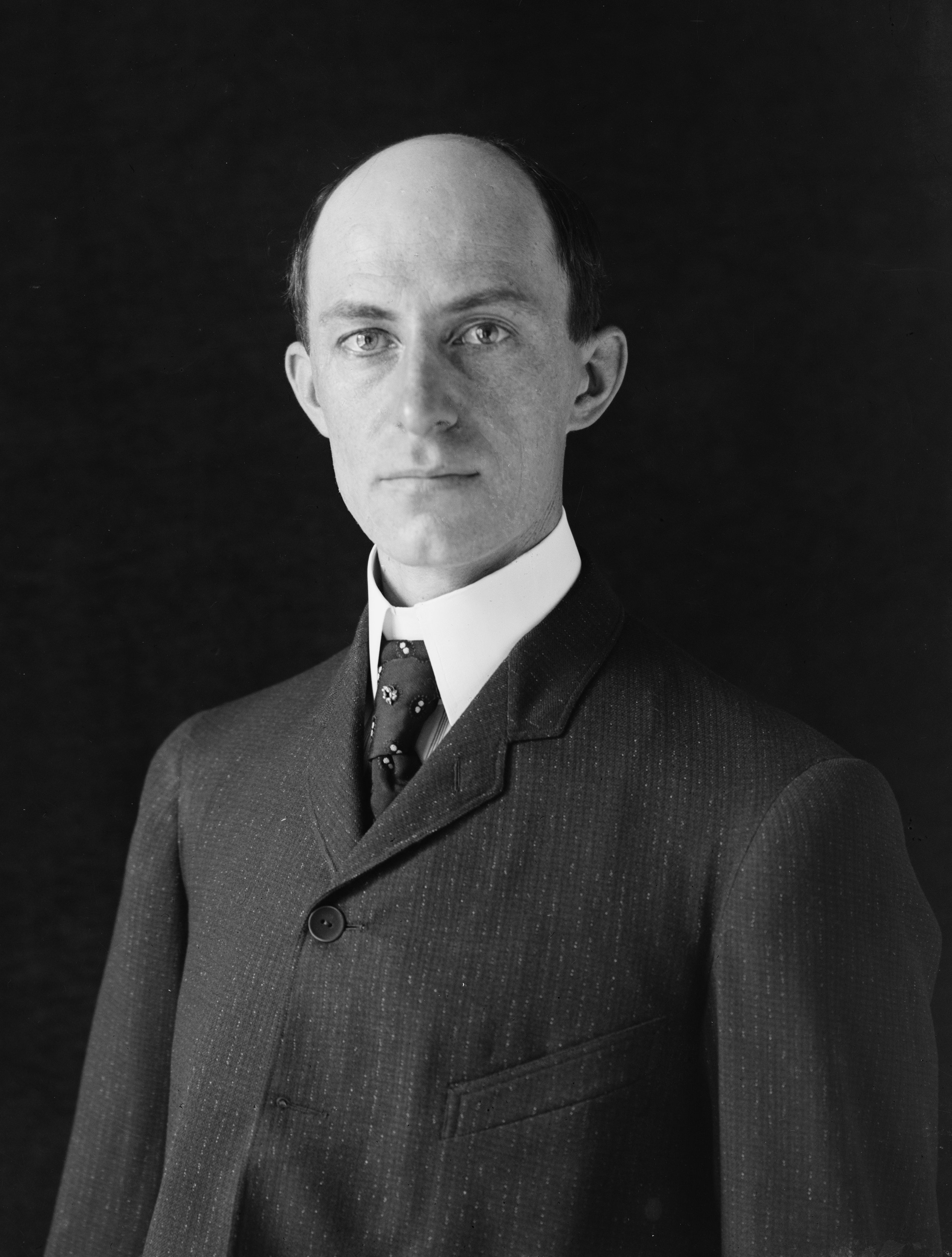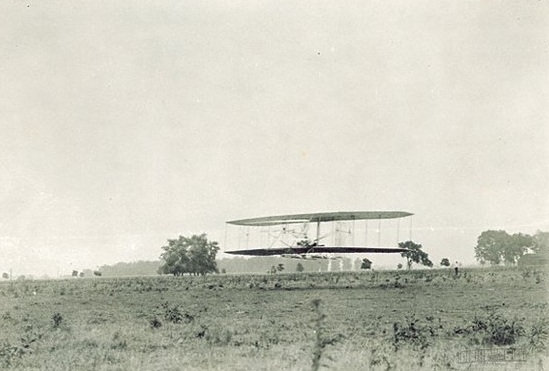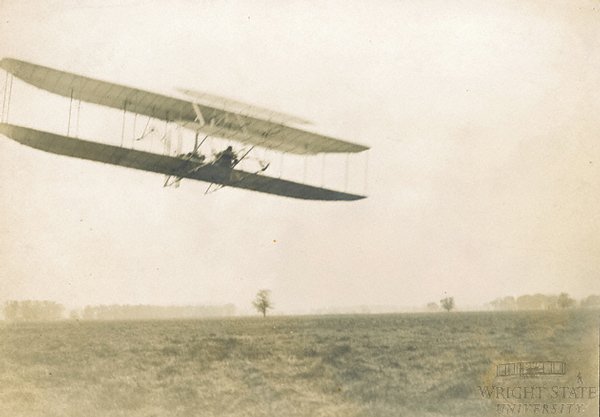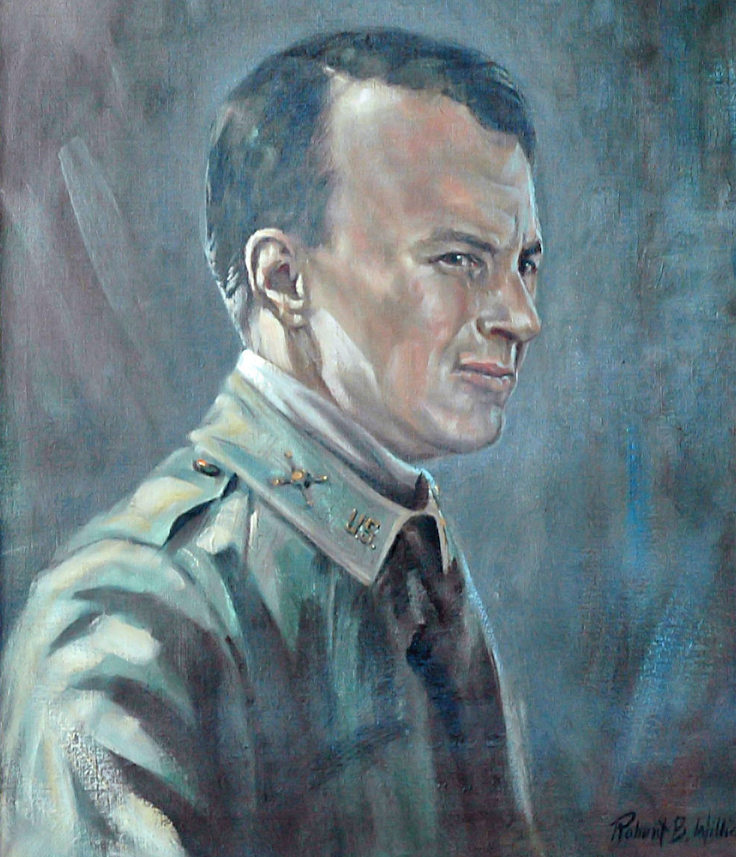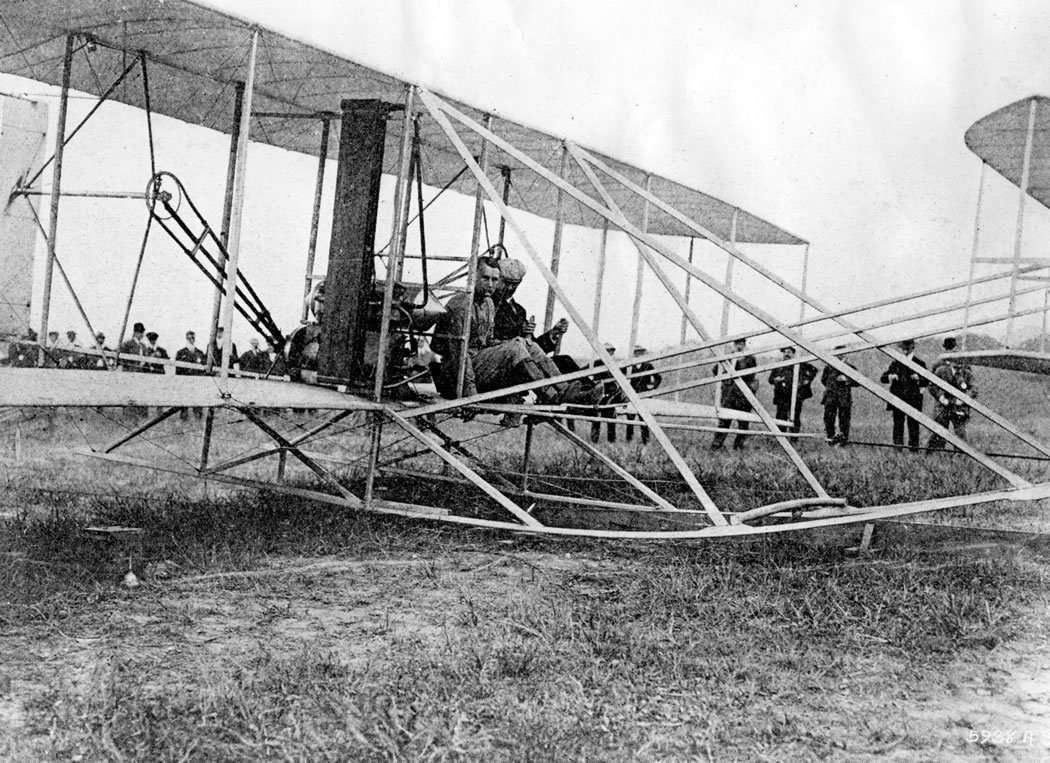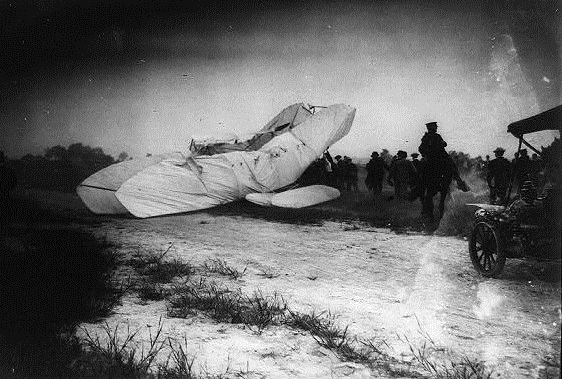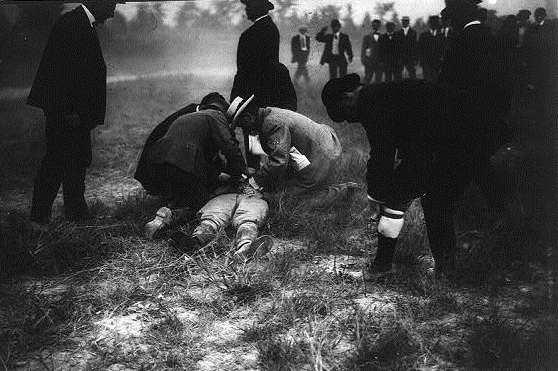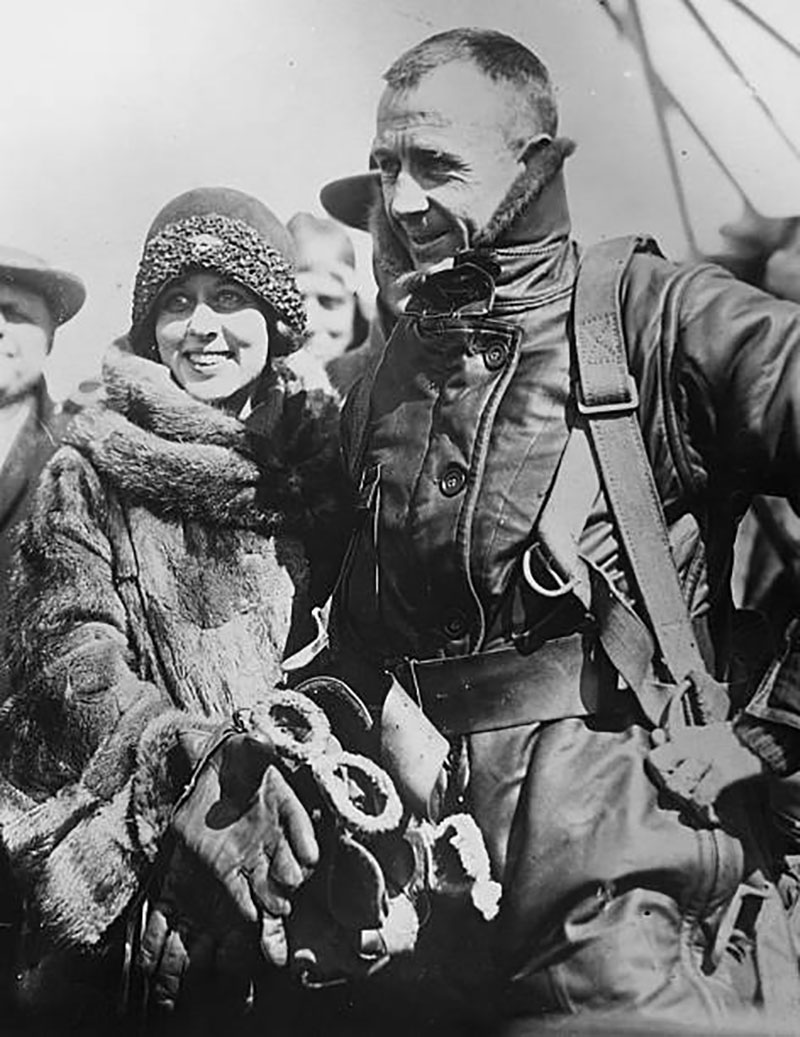
29 January 1926: At McCook Field, near Dayton, Ohio, First Lieutenant John Arthur Macready, Air Service, United States Army, took off in an experimental airplane, the Engineering Division XCO-5. Macready was attempting to exceed the existing Fédération Aéronautique Internationale world altitude record of 12,066 meters (39,587 feet), which had been set by Jean Callizo at Villacoublay, France, 21 October 1924.¹
The official observers of the National Aeronautic Association were Orville Wright (co-inventor with his brother Wilbur, of the airplane); George B. Smith of Dayton; and Levitt Luzurne Custer (inventor of the statoscope, the original barometric altimeter).
The Dayton Daily News reported:
Every part of the plane functioned perfectly. . . with the exception of the supercharging apparatus. The plane climbed to 25,000 feet in less than 45 minutes. The remainder of the flight was a fight against the dropping pressure in the motor.
In taking off, the altitude plane required approximately 50 feet and immediately began a steep ascent. Throughout the test the several hundred people who had congregated to see the flight start could find the plane by a long line of white vapor, which trailed in the wake of the ship in the rare atmosphere.
On other tests the plane has shown sea level pressure at approximately 32,000 feet. The super-charger showed a steadily declining pressure after 25,000 feet, indicating its lack of sufficient capacity for the motor. . .
—Dayton Daily News, Vol. XL, No. 162, January 29, 1926, Page 1, Column 7, and Page 2, Column 2
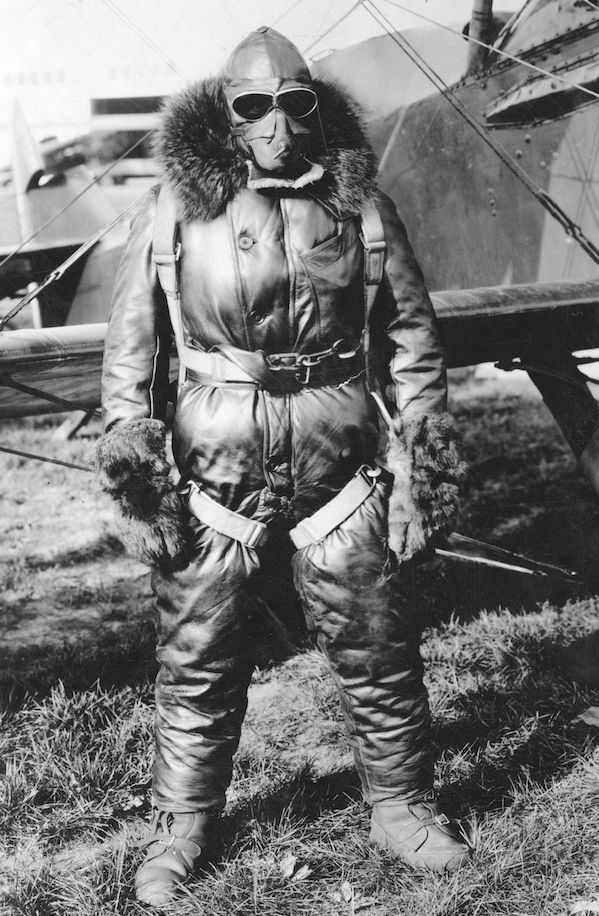
Lieutenant Macready reported, “My watch stopped at 30,000 feet and I believe it was frozen, because just before landing it started again.” He observed a temperature of -62 °C. (-79.6 °F.) at 34,600 feet (10,546 meters), which he said then increased to -56 °C. (-68.8 °F.) at 36,000 feet (10,973 meters).
When the airplane was inspected after landing at McCook Field, it was found that a crack had developed in the supercharger intercooler, allowing the supercharged air to escape. This resulted in a significant loss of power, and prevented Macready from passing Callizo’s record.
Lieutenant Macready reported that the Fédération Aéronautique Internationale altimeter (one of two altimeters in the airplane’s cockpit) had indicated that he had reached a maximum of 36,200 feet (11,034 meters). When the sealed barograph was sent to the Bureau of Standards in Washington, D.C., for calibration, it indicated a peak altitude of 38,704 feet (11,797 meters). This was 269 meters (883 feet) lower than the existing world record, but it did establish a new United States national altitude record.
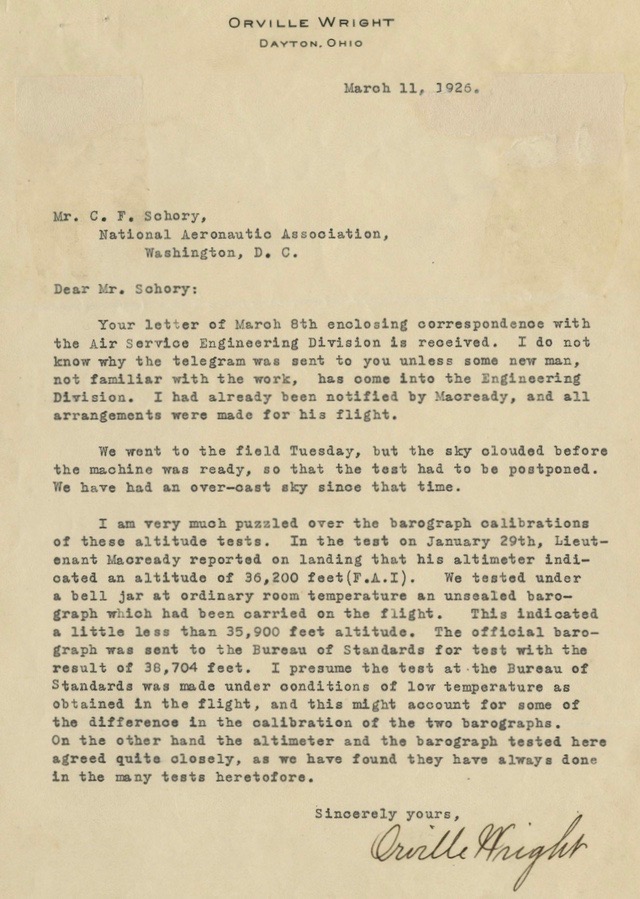
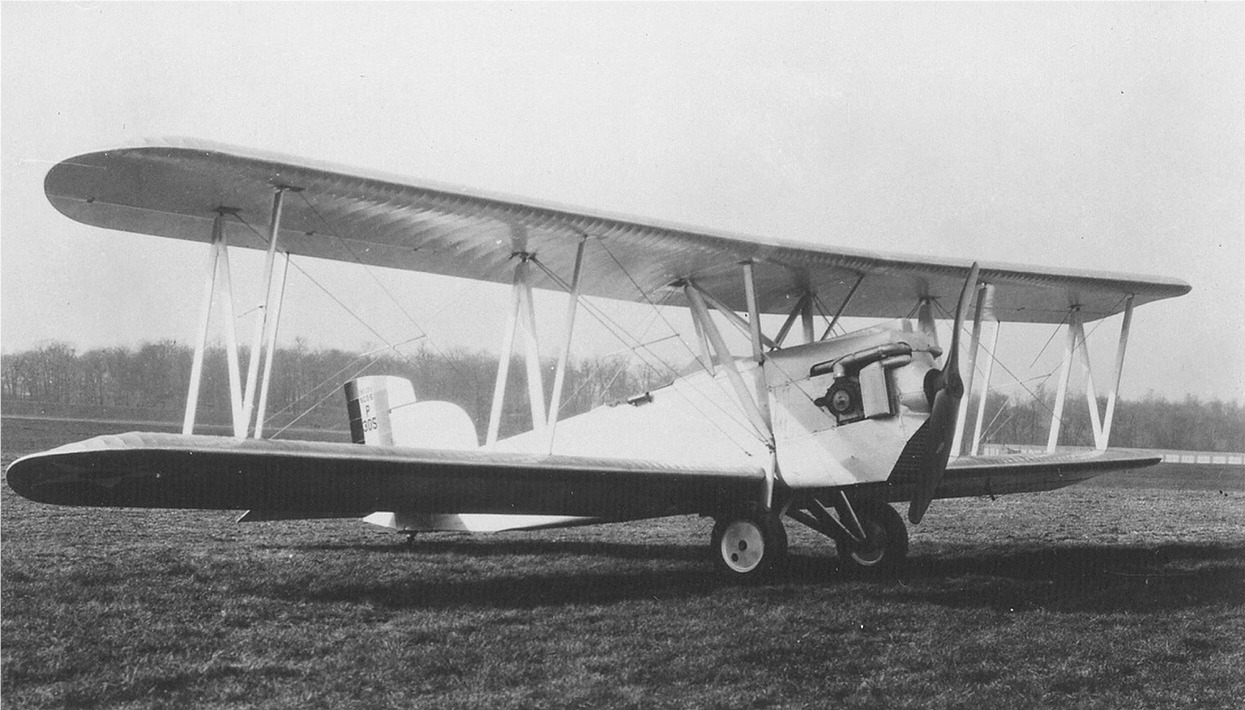
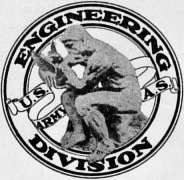
The XCO-5’s wings were built specifically for flight at very high altitude, using an airfoil (Joukowsky StAe-27A) designed by Professor Nikolay Yegorovich Zhukovsky (Николай Егорович Жуковский), head of the Central AeroHydroDynamics Institute (TsAGI) at Kachino, Russia. The two-bay biplane wings had a significant vertical gap and longitudinal stagger. The lifting surface was 600 square feet (55.742 square meters). The upper wing had dihedral while the lower wing did not.
The XCO-5 was 25 feet, 1 inch long (7.645 meters) with a wingspan of 36 feet (10.973 meters) and height of 10 feet (3.048 meters). The empty weight was 2,748 pounds (1,246 kilograms) and the gross weight was 4,363 pounds (1,979 kilograms).
The XCO-5 was powered by a water-cooled, 1,649.34-cubic-inch-displacement (27.028 liter) Liberty 12 single overhead cam (SOHC) 45° V-12 engine. It produced 408 horsepower at 1,800 r.p.m. The L-12 is a right-hand tractor, direct-drive engine. As installed on A.S. 23-1204, the engine turned a specially-designed, two-bladed, ground-adjustable, forged aluminum propeller with a diameter of 10 feet, 6 inches (3.200 meters). The Liberty 12 was 67.375 inches (1.711 meters) long, 27.0 inches (0.686 meters) wide, and 41.5 inches (1.054 meters) high. It weighed 844 pounds (383 kilograms).
Also installed on A.S. 23-1204 was an experimental supercharger. FLIGHT explained:
Since the Liberty engine, which delivers 400 h.p. at sea level, has an output of but 50 h.p. at 35,000 feet unsupercharged, a supercharger is a prime requisite of altitude work. The General Electric Form F, 20,000-ft. side type supercharger used in previous tests, with certain modifications, has been installed. The supercharger is an air compressor which keeps the air pressure in the carburettor at sea level pressure at heights where, owing to the natural decrease in the air pressure, the horsepower gradually falls away but to a fraction of its original output. In former supercharger installations, much difficulty was experienced with pre-ignition of the engine. This often became so pronounced that the plane had to be brought to earth. It was suspected that a richer mixture with the supercharger at altitude was necessary. This was found to be true but the principal difficulty was the overheating of the mixture due to the heat generated in the supercharger itself. Due to the increase in temperature created by the compression in the supercharger, it was necessary to interpose an intercooler between the supercharger outlet and the carburettor in order to obtain satisfactory engine performance. The intercooler, in the form of a honeycomb radiator, was placed on the side of the aeroplane. It was also found that the poor conductivity of the air at high altitudes, additional radiating surface for engine cooling was required. This, with the correction of mixture, put an end to pre-ignition.
—FLIGHT, The Aircraft Engineer & Airships, No. 893. (No. 5, Vol. XVIII.), 4 February 1926, Page 69, Column 1
The XCO-5 has a maximum speed of 129 miles per hour (208 kilometers per hour) at Sea Level, and a cruise speed of 117 miles per hour (188 kilometers per hour).
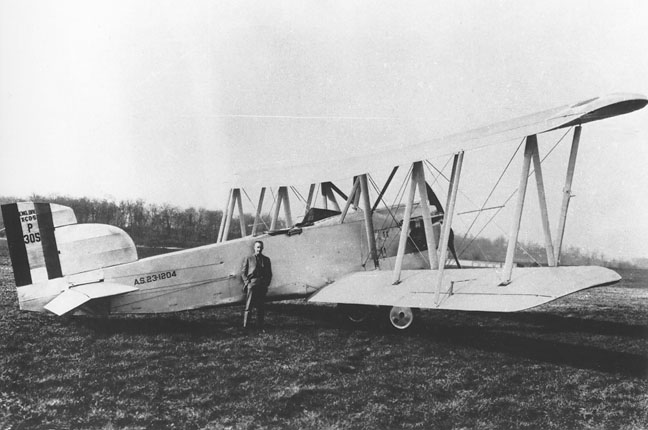
¹ FAI Record File Number 8384, Gourdou-Leseurre GL.40, 300 c.v. Hispano Suiza
See also: John Arthur Macready (14 October 1887–15 September 1979) [TDiA No. 1,500]
© 2019, Bryan R. Swopes
